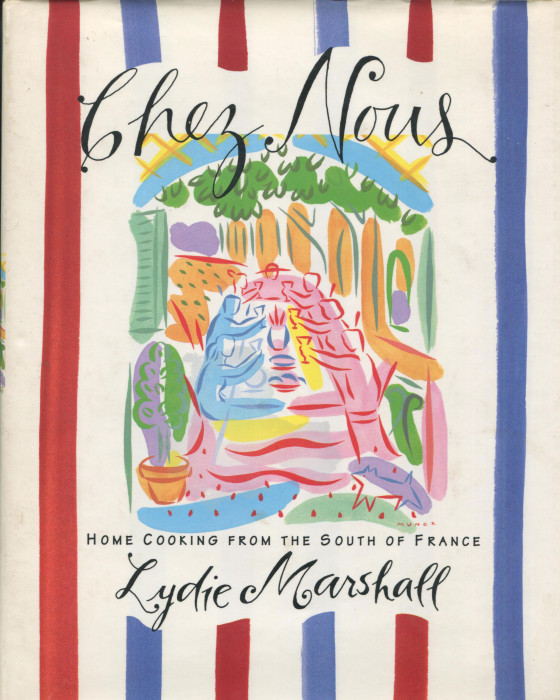Twenty-one years ago, Lydie Marshall wrote this book, one of the five she produced in a 50 year career. Besides writing, Lydie taught cooking in her native France in Provence and in New York. She understood both cultures and in this book brought French country food to US kitchens.
The subtitle here reads: Home Cooking from the South of France. This not just home, but country home cooking. So this is not a collection of Paris restaurant recipes, ones you might be a tad challenged to reproduce. These are recipes created by “real” people for “real” people. You and me.
The recipes abound with using the fruits of the earth: veggies and fruits and berries. Consider these recipes from the Appetizer chapter:
Eggplant Caviar
Cold Eggplant and Tomato Gratin
Stuffed Tomatoes with Ricotta and Basil
Zucchini Flan with Tomato Sauce
Ham and Zucchini Terrine
Red Pepper Aspic
Cold Honeydew with Fresh Cheese
Shredded Rabbit Pâté
Fresh Pasta with Truffles
There’s some protein there, but the core of these recipes is a basket of veggies, ideally ones you have just pulled from your own garden. Distinctive, not too complicated, and fueled by freshness.
Beyond the appetizers, the usual suspects for chapters are here: salads, soups, Provencal pizza, fish, poultry and game, beef and veal, lamb, pork, vegetables and beans and grains, and desserts.
The emphasis on veggies never ends. The Soups include an Asparagus Bouillabaisse and a Spinach Bouillabaisse too, plus Red Pepper Soup. The Pizza ideas offer an Eggplant, Cheese and Bacon, and a Tomato and Cheese and Olive.
The Fish options suggest trying Stew of Monkfish and Wild Mushrooms or Fish Steak in Papillote with Mint and Penrod.
In Poultry and Game, the presence of the Mediterranean is obvious in recipes like Chicken Fricassee with Preserved Lemons and Braised Quail with Vegetables Served with Couscous.
All those meat chapters let you devour your protein with veggies integrated right in. Consider Veal Breast Spareribs with Fresh Tomatoes or Veal Shanks Braised with Pearl Onion and Tarragon.
The chapter for Vegetables, Bean and Grains has a list of ideas four pages long:
Ragout of Jerusalem Artichokes
Eggplant Gratin Confit of Potatoes with Wild Mushrooms
Spinach in a Béchamel with Hard-Boiled Eggs and Croutons
Cornmeal Soufflé
White Bean Stew
The Dessert chapter is equally long but with a very distinctive core. Lydie suggest a “tart of the month” approach to your baking.
Clementine Tart in January
Almond and Apricot Jam Tart in February
Candied Lemon Tart in March
Strawberry Tart in April
Rhubarb Tart in May
Cherry Tart in June
Raspberry Tart in July
Blueberry Tart in August
Caramelized Upside-Down Plum Tart in September
Apple Galette [almost a tart] in October
Pear and Almond Tart in November
Nut Tart in December
As an accomplished teacher and writer, Lydie was always concerned about success. Nothing can deflate a student more than a kitchen failure. So, she exercised great care in these recipes. The ingredient lists are modestly long, not foreboding. The writing is simple, terse and presented in paragraphs of just one or two sentences. You always know where you are, and you always know what to do at each stage of the recipe.
And now, you know something else to do. Take a look or, better, take a bite. If “Country French” has appeal for you, then Chez Nous is “yours”. Or “ours”.

